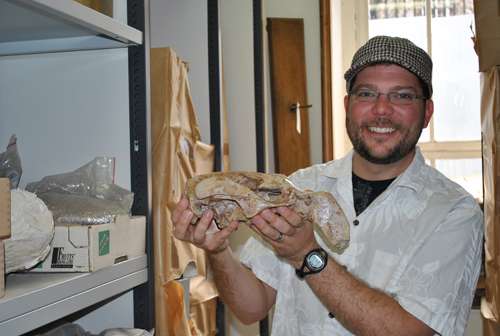Researchers crack the ice to study the Arctic marine food web

Scientists traveled to a town near the top of the world to study a creature at the bottom of the marine food chain—microscopic sea ice algae. Welcome to Barrow, Alaska, where a team of marine ecologists gears up to hit the sea ice—desolate terrain that is actually teaming with marine life.
With support from the National Science Foundation (NSF), Craig Aumack of Columbia University and a team have come here to investigate how algae in the sea ice contributes to the underlying marine ecosystems, and which marine organisms depend on the algae for nutrition.
Some algae live dormant in the ice all winter, bloom when the spring sunshine kick-starts a growth cycle, and, eventually, migrate down to the bottom of the ice and enter the water column where they provide a nutritious dietary food source to many marine organisms.
Going forward, the changing climate could mean disruptions to the sea ice community, as well as loss of the ice habitat itself, likely affecting a near shore Arctic marine food web that begins with algae and ends with much larger creatures, such as whales and polar bears. Aumack says the algae could be considered a "canary in the coal mine" for climate change in the Arctic—early sentinels of a changing ecosystem.
Provided by National Science Foundation
















